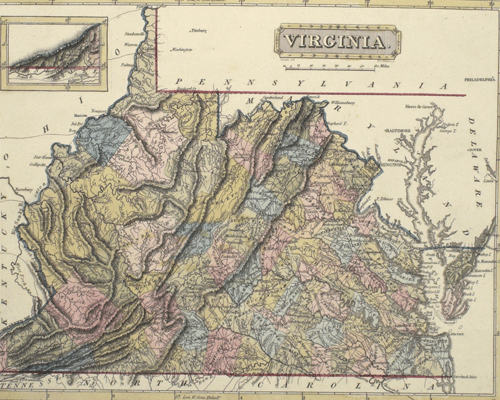Results navigation
62. Virginia 1790 House of Delegates, Essex County
63. Virginia 1790 House of Delegates, Fluvanna County
64. Virginia 1790 House of Delegates, Jefferson County
65. Virginia 1790 House of Delegates, Norfolk County
66. Virginia 1790 House of Delegates, Orange County
67. Virginia 1790 House of Delegates, Powhatan County
68. Virginia 1790 House of Delegates, Prince Edward County
69. Virginia 1790 House of Delegates, Princess Anne County
70. Virginia 1790 House of Delegates, Sussex County
Results navigation

The Commonwealth of Virginia rebelled from England and created its own constitution in 1776 as an independent state. This document was written primarily by James Mason and was basically a bill of rights rather than a detailed framework of government. When Virginia joined first other colonies, under the Articles of Confederation, and then the United States, under our present Constitution, its government functioned much as it had as a colony. It had a legislature, but that body and the county courts were dominated by an elite of what one historian has called "Gentlemen Freeholders." This colonial gentry was made up of men who had a good deal of land and twenty or more slaves. Yet the right to vote was much more widely enjoyed than in England. Although governors were appointed by the imperial government before the Revolution, there were popular elections for the House of Burgesses.
Thus colonial Virginians (at least, many of the white landholding men) were used to elections, and these were several-day events that were quite public and rather intensely social. From 1776 until 1850, the government of Virginia continued to function on its original principles, and the Virginia constitution was not significantly changed. Thomas Jefferson early had called for a revision of the constitution of the commonwealth. His most extensive analysis was in “Notes on the State of Virginia,” published in the 1780s. Most historians are also familiar with a well-known letter written just a year before his death when constitutional reform was being debated.
The Old Dominion (as Virginia was often called) during the period of the elections being presented here had a governor and his counsel elected by the legislature. The legislature was bicameral, and both houses were popularly elected by the freeholders—essentially white men who held a respectable amount of land or, after the legislature changed the law in 1785, lived in town and owned a house.
In the 1820s the movement for reform grew. There were a number of demands to democratize the government, by electing the governor popularly, for example, or by building a hierarchy of republics from the local level up (Jefferson’s favorite idea). Even so, the famous collection of prominent Virginian statesmen, including ex-presidents, senators, congressmen and even the chief justice of the Supreme Court of the United States, made very little change in the suffrage, admitting only "householders." The governor's council was eliminated, but the number of elective offices was not expanded. The unequal system of representation in the legislature was addressed by a compromise giving more seats to the west—mostly the Shenandoah Valley—without creating a rational plan for the future.
During this period, Virginians could vote for their legislators, congressmen, and electors in the presidential elections. They voted yearly in the spring for legislators, every two years for their members of Congress, and every four years for presidential electors. At first they voted for the electors themselves, because they were not willing to say whom they might vote for. The freeholders voted at the polling place closest to their home—a polling place that was often a court house but sometimes a local store. These Virginians voted viva voce, so we have poll books in some counties for some elections to supplement the statistics taken mostly from newspapers.
Bibliography
- Dabney, Virginius.
Virginia: The New Dominion (1971) - Heinemann, Ronald L., John G. Kolp, Anthony S. Parent Jr., and William G. Shade,
Old Dominion, New Commonwealth: A History of Virginia, 1607-2007 (2007). - Salmon, Emily J., and Edward D.C. Campbell, Jr., eds.
The Hornbook of Virginia history: A Ready-Reference Guide to the Old Dominion's People, Places, and Past 4th edition. (1994) - Official State of Virginia Site
- Library of Virginia
- Virginia Historical Society






